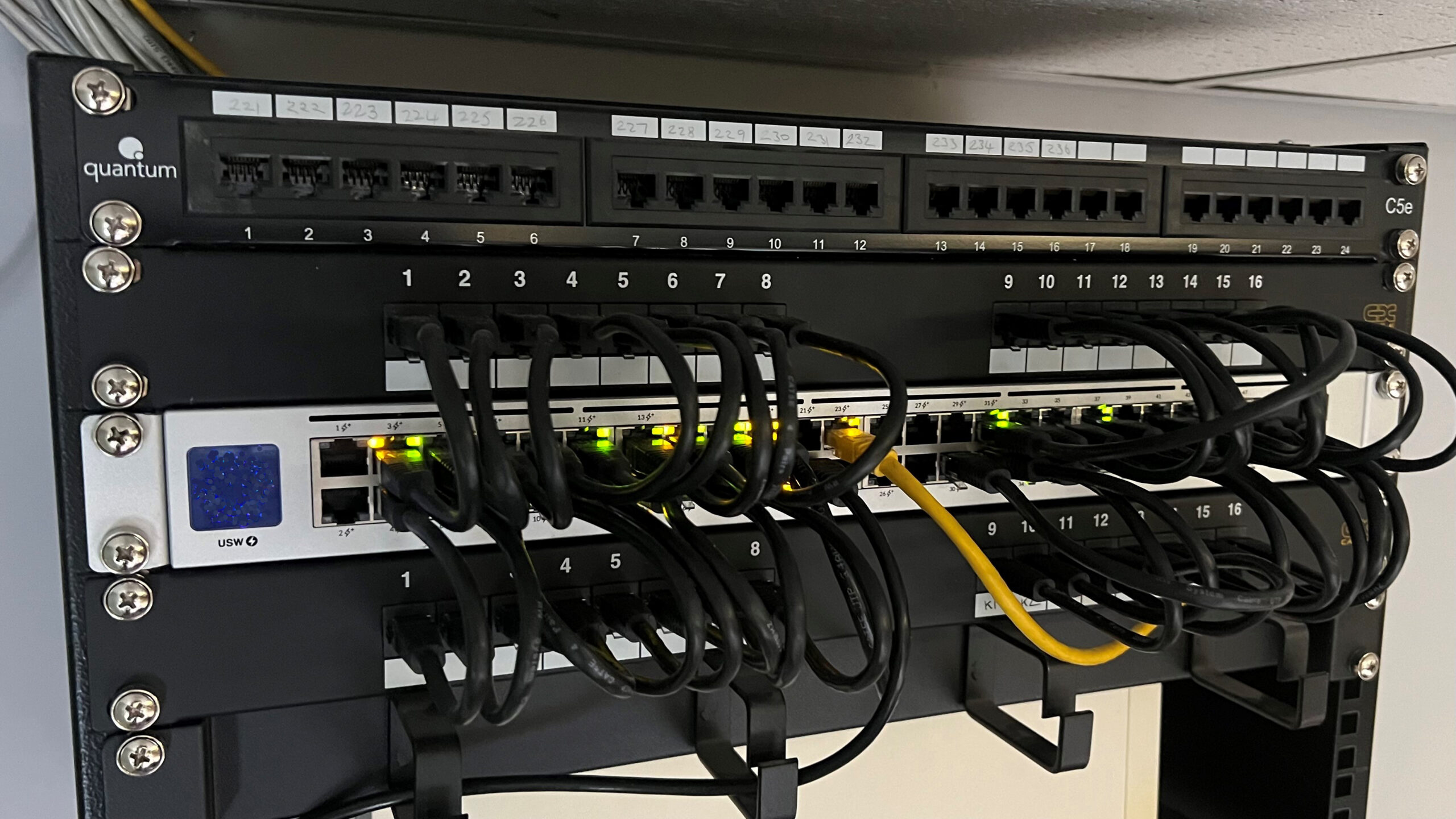
It’s National IT Professionals Day. Let’s hear from our internal IT specialist about their career and the day-to-day workload.
“How did your career start?”
Like many brought up in the 1980’s, my first experience was at school and saving birthday/Christmas money to purchase a Sinclair ZX81. I moved away from the “Wobbly 16K RAM Pack” and upgraded to the full colour Sinclair Spectrum 48K where I learned the craft of hacking games to bypass copy protection devices, making mods for infinite lives cheats and so on!
Without the structure (good or bad) of any formal training, I have always looked at I.T. from an “every day is a learning day” perspective. I always try and look at the desired outcome and work backwards, learning as I go. Trial and error is your friend here!
“What are your responsibilities at deegee?”
Job one was to bring in-house the hardware support. In cost terms alone, the company’s hardware contract had been more expensive than replacing the IT estate every 18 months. With a three-year life cycle of a PC, this was an immediate cash saver. However, with more careful planning and ongoing management, as well as re-deployment of equipment as it comes out of its initial primary use, we really do extract every ounce of value out of our kit!
Moving away from the hardware aspect, I’m fundamentally lazy! By that I mean, if a certain dataset is requested from me more than a couple of times, I will find a way to automate it. My first breakthrough came in presenting a daily sales figure to the Directors; it had been taking a member of the team around five to six minutes to produce and record a sales total for the day (every day!). I worked on interrogating our ERP system to splat that figure on a screen in a fraction of a second, so that the Directors could keep a track of what they needed pretty much in real time. What I learned from that opened up opportunities across the business; the availability of real-time information generated a demand for more, actionable, figures. Probably my biggest ever time-saver was translating a bespoke commission report that was taking thirty-five minutes to run, into a web-based report that presented the same data in under five seconds.
Today, we are about fifteen months into a product data digitalisation project; classifying data to ETIM standards as well as capturing bespoke data points, product images, technical drawings, … We are already benefitting from on-demand product datasheets that pull from this constantly up-to-date data. No more regenerating hundreds of .pdf sheets as products evolve, just click and print/email! This is great for new products as the datasheet can be available moments after engineering have confirmed the data is valid, often in advance of even ordering production quantities of component stock. We currently syndicate our data to two UK data pools, making our product data potentially available on the Trade Counter of nearly every Electrical Wholesaler in the UK, and provide, via our overseas distributors, exports for their systems. We have great plans for exploiting this central, structured, “single-source-of-truth” dataset into many other areas.
“How did you support the company during the Pandemic?”
We were extremely lucky, to be honest. Some years earlier I had moved away from hosting our email server (MS Exchange) in-house and migrated to the Microsoft 365 cloud. This alone took a management headache away, allowing business email outside of the building without resorting to personal email accounts. I then, for cost reasons at the time, migrated all our telecoms to a VOIP infrastructure.
For some considerable time, as a company we had been kicking-around the possibility of moving our ERP system online mainly as a server license cost saving. With news of the impending Covid-19 pandemic in the media, I finally signed the contract to commit to the move on the 12th of February 2020. Thanks to the professionalism and commitment of our partners at Smith Cooper and Infuse, we completed data migration and went live with our new platform on the 26th of March 2020 – just ahead of the Government’s stay at home order.
The final piece of the jigsaw was to quickly source laptops for the team – which, as you can guess, was tricky at the time.
Taken all-together, it was possible for the team to work from home as if they were in the office – totally as it should be. Looking back, like many other companies we found that many of the reasons to not allow working from home were nothing more than managerial excuses; excuses that were taken away when forced to make the change. We are a better company for having come through this.
“What’s next?”
We continue to look at ways to eliminate printed paper in as many forms as possible; often, it is the existence of a core piece of paper that prevents a given task from transitioning well off-site. Our product digitalisation efforts have taught us a lot about central storage and data re-use and I’m using those lessons to move us forward.
Energy consumption within any business is a constant cause for concern and I.T. equipment that is “always-on” has a real impact on this. I am implementing seemingly insignificant changes that will have large impacts over the long-term. Being able to decommission a single server that isn’t actually contributing much to the business can save hundreds of pounds each year.
“Last words?”
“Everywhere is walking distance if you have the time” – Steven Wright. No matter how big or challenging something is, do whatever it takes to move towards it. Small incremental movements over the long-term will get you there.
Remember – Every day is a learning day!
